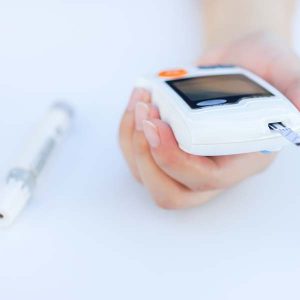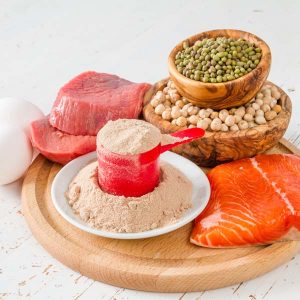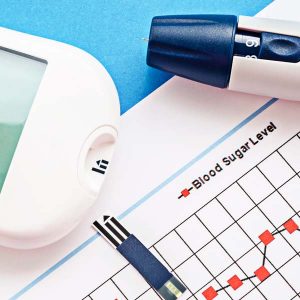Thou Shall NOT Eat Sugar!!!!!!!
Don’t worry I’m just kidding. Definitely not one of the commandments of diabetes management, but a stereotype and misconception associated with diabetes for sure.
As with everything else in your diet, when you have diabetes, you can still have foods with sugar (carbohydrates) just in moderation. In fact, carbohydrates are a key factor in many diabetes management plans. If you’ve been struggling with your management methods, or just looking to learn more about diabetes then, these commandments are definitely for you.
Let’s take a look at the Diabetes Commandments for Better Management.
Contents
1. Eat More Veggies
I get it, vegetables are boring, and some aren’t really that tasty. However, they are a key component of diabetes management. Why you ask? Vegetables contain vital nutrients that your body needs on a daily basis. They are a healthy carbohydrate option, for ensuring your body gets the fuel it needs to function efficiently. Vegetables are one of your main sources for not only vitamins but fiber and minerals, all of which are important in diabetes management. Those low in carbohydrates are a great choice, because it allows you to eat more without worry of overdoing it.
Vegetables which are low in carbs include:
- Spinach
- Broccoli
- Onions
- Cauliflower
- Mushrooms
- Peas
- Peppers
- Eggplant
- Cucumber
- Zucchini
- Turnip
- Asparagus
- Cabbage
- Brussel Sprouts
If you’d like to know more about what types of vegetables work great for a diabetes management plan, click here!
Other helpful articles you should read:
- Lifestyle & Healthy Eating Tips For Diabetes Type 2
- Dietitians Answer Questions About Energy Levels, Picky Eaters, Plant Based Diet & More For Those With Type 2 And Prediabetes
- Diabetes And Cholesterol: What Is The Relationship?
- Dealing with Emotions: How Diabetes Can Affect Your Mood
- What Your Blood Sugar Meter Data is Telling You
2. Always Check Your Blood Sugar
Diabetes is a lot of work, that’s for sure. But ensuring the accuracy of your blood sugar levels is important for dosing decisions or when your doctor needs to make adjustments to your medications. Together with your doctor, you will determine how often each day you should test. But for a more detailed look at what your numbers are looking like throughout the day, there are a few times that are definitely a must.
- Fasting Blood Sugar: This should be tested first thing in the morning before you eat anything. Your fasting level gives your doctor a good idea if your regimen is currently working. If you are on insulin, they can determine if your basal doses need an increase or decrease according to how your blood sugar cooperated throughout the night.
Before Meal: Always test your blood sugar before you eat. This is extremely important if you are on insulin. You will want to know what your level is so that you can correctly and accurately dose for the meal you are about to consume. - Post Prandial: This is your after-meal blood sugar level. It is most beneficial because it allows your doctor to see how well your current regimen is working. You will want to test 2 hours after eating. This lets you know how well everything works to bring your levels back down post meal.
- Before Bed: It’s always wise to check your blood sugar before you go to bed for the evening. You don’t want to go off to bed on a lower number, or on the other side of things go to bed at a higher level. This could lead to difficulty during the evening hours and into the morning.
3. Choose Carb Free Beverages
While water is the best choice for a carb free beverage, it’s understandable that you don’t want to drink unflavored water all day long. Unsweetened ice tea is another great option because tea is full of antioxidants which is also beneficial to your health. You can add a little sweetness to the tea by using a no-calorie sweetener such as sucralose and stevia.
Other available options such as Mio can add a little bit of flavor and even some vitamins to your water, sugar free sports drinks, and on occasion diet sodas.
4. Stick to a Consistent Carb Total Per Meal
It’s important to first consult with your doctor to determine what number of carbs is best for you per meal. It is important to try and remain consistent. Typically, it’s a good idea to stick to between 30-40 grams each meal. Being consistent allows you to learn more about what foods affect your blood sugar and how well your current treatment regimen is working.
5. Make Sure You Always Include Protein
Protein is another great source of nutrition and it also can help to regulate your blood sugar levels. The benefit of protein is that it can help to sustain your hungry as well as help your levels stay balanced over longer periods such as overnight. Including a protein with a snack before bedtime can help to keep your blood sugar levels from dropping too low during your sleep.
While protein can still raise your blood sugar levels slightly, it does not have the same effect that carbohydrates do.
6. Try to Eat at Home as Often as Possible
Eating out once in a while can be a fun way to take a break from daily life, but it can wreak havoc on your blood sugar levels. At home, you have more control over what foods you eat as well as the nutrition that they provide.
When you do eat out, be sure you ask the restaurant or take out joint if they offer nutritional facts or labels. Most often you will find that they have pamphlets that can help you to more accurately determine what you are eating. For those on an insulin regimen that follow carbohydrate counting, this can help to make sure you are taking the proper insulin dosage.
I recommend you read these articles:
7. Keep Track of Your Blood Sugar Levels
The old school method of tracking your blood sugar levels is to write them out. To help keep track of them in a more effective and organized manner, take a look at the tools and downloads we offer here.
Another option that is available thanks to new modern technology, are the various applications for your mobile devices and smartphones. Apps like mySugr, and Glucose Buddy offer a way to store your data and even analyze it all in one convenient location.
Depending on your treatment method, you may also be able to upload your data on your computer or into the cloud. Insulin pumps like the Tandem T-Slim X2 offer data saving solutions that allow you to upload your blood sugar levels and carb totals for each meal to your computer.
If you are on a continuous glucose monitor (CGM) you already have access to TONS of valuable data from the 24-hour graphs of your blood sugar information. If a CGM is something you are considering or would like more information about, check out the newest FDA approved model, the Dexcom Mobile G5. It offers you the ability to keep an eye on your blood sugar levels on your mobile phone. Additionally, if you take care of someone with diabetes, you also can keep track of their levels on your phone no matter where you are, as long as you have access to WiFi or cellular data.
Note: When recording your blood sugar levels, you should also make sure to include special notations such as total number of carbohydrates, increased activity levels and other factors that may affect your blood sugar levels such as stress and illness.
You might also like:
Conclusion
Diabetes is difficult enough with the constant monitoring, food intake decisions, medication adjustments and more. Learning to find a comforting way to live in this new ‘life’ can help to ease your worries and frustrations that come along the way.
These commandments just help to keep you on track with the most important and vital things you should be doing day in and day out. It may seem overwhelming in the beginning, because it’s all new and not something you are used to. But after time you will become more adjusted to everything and what needs to be done. It will seem like you are in auto pilot for some of these tasks.
TheDiabetesCouncil Article | Reviewed by Dr. Sergii Vasyliuk MD on September 11, 2018













